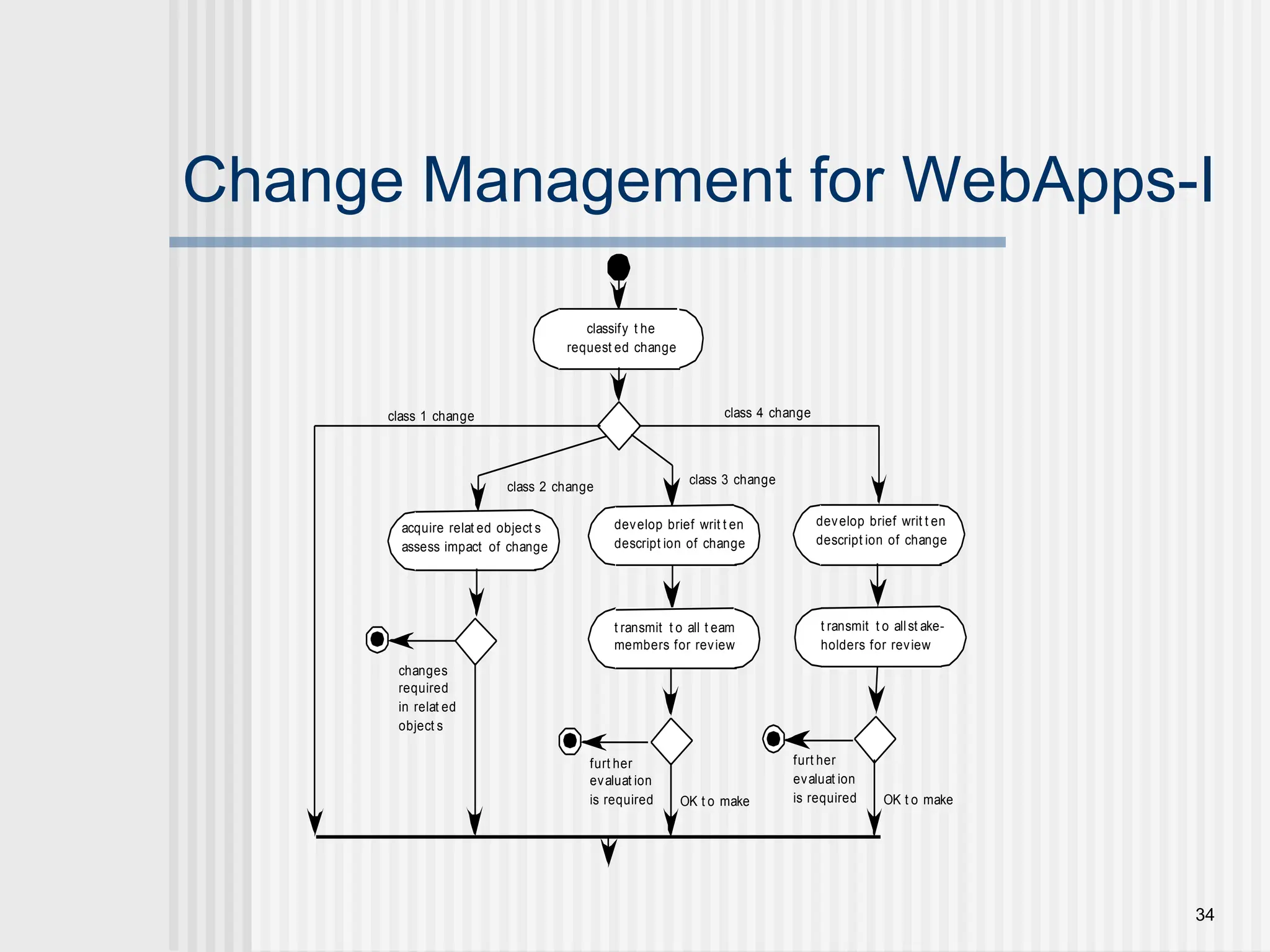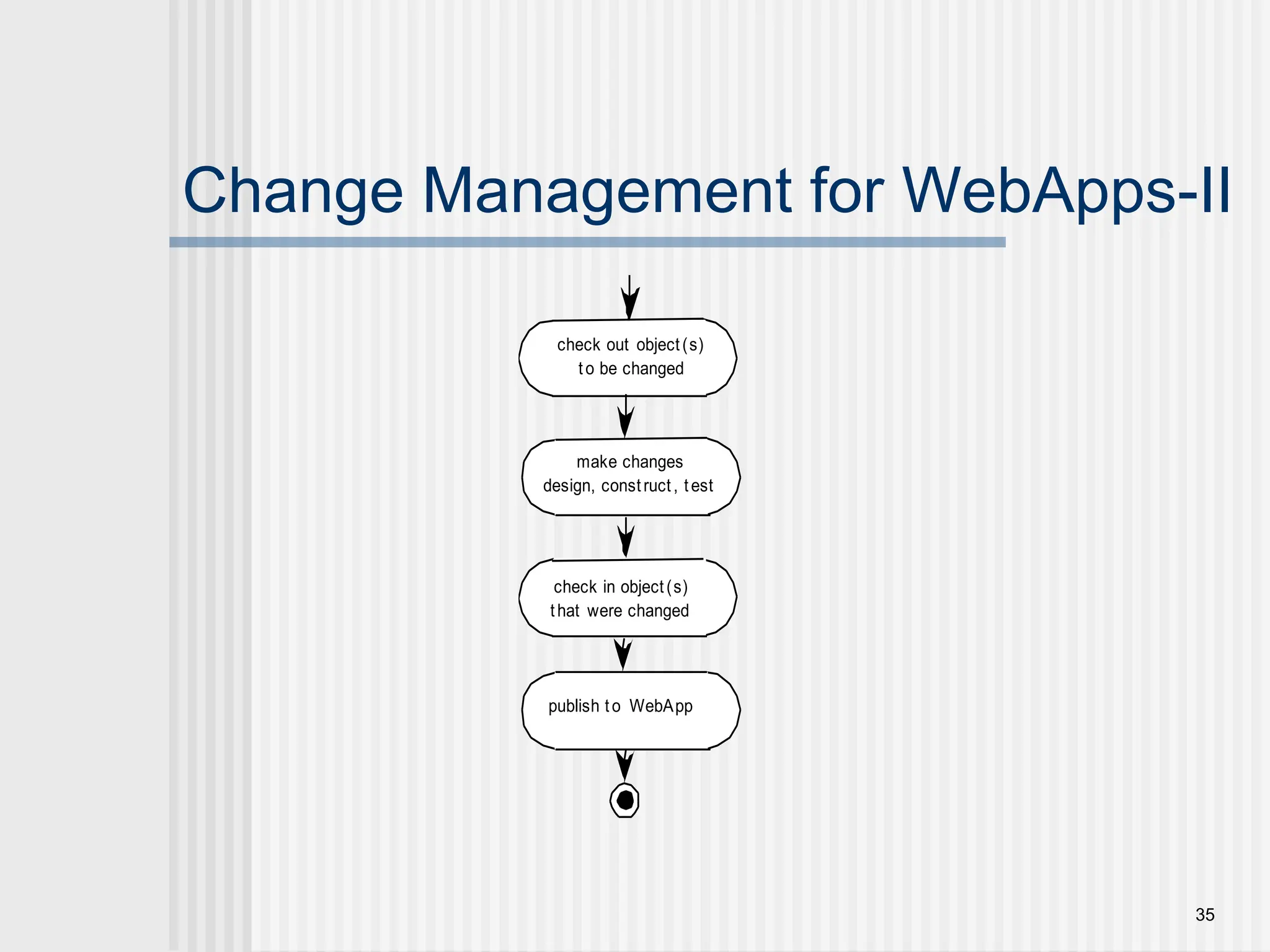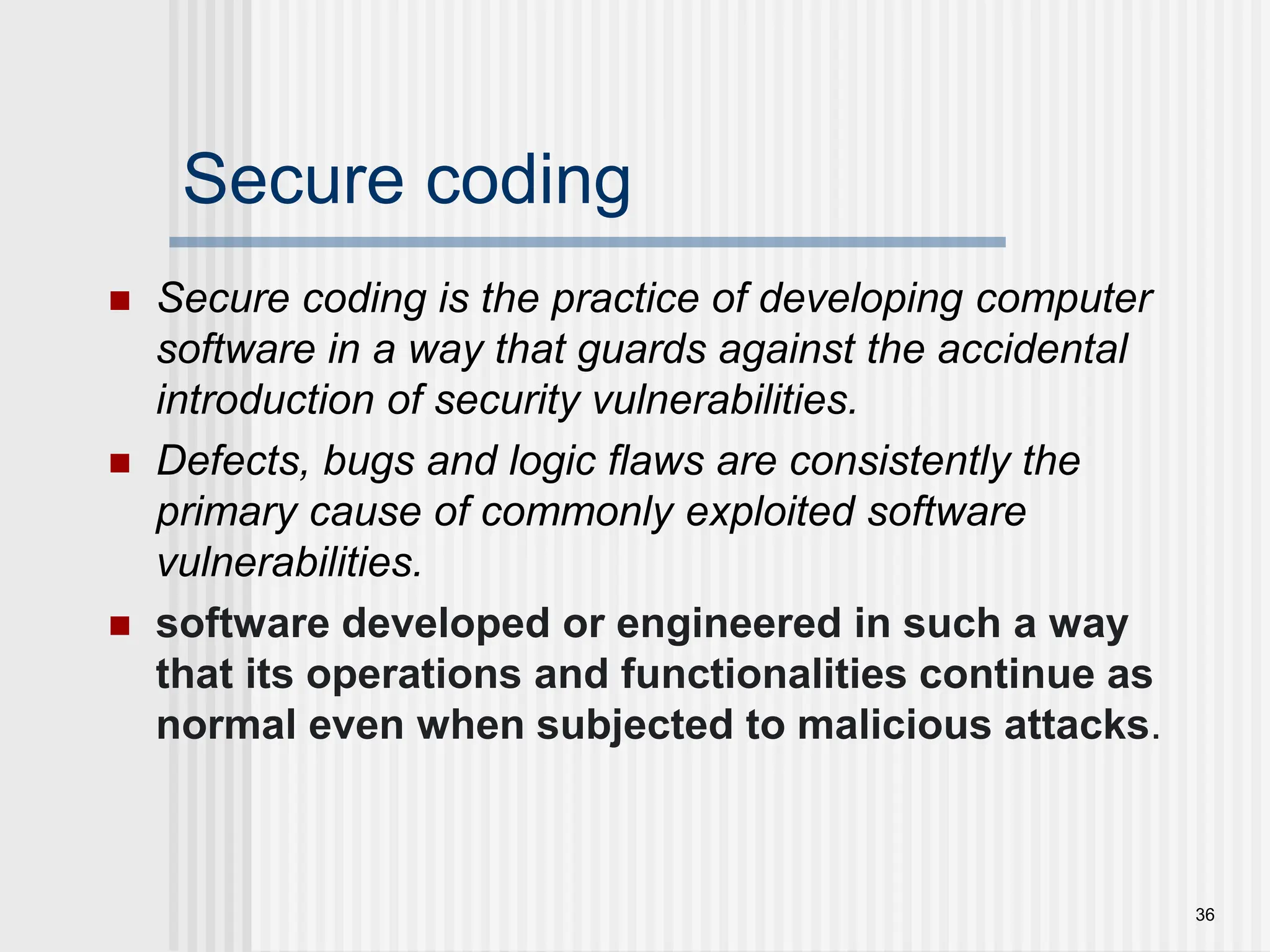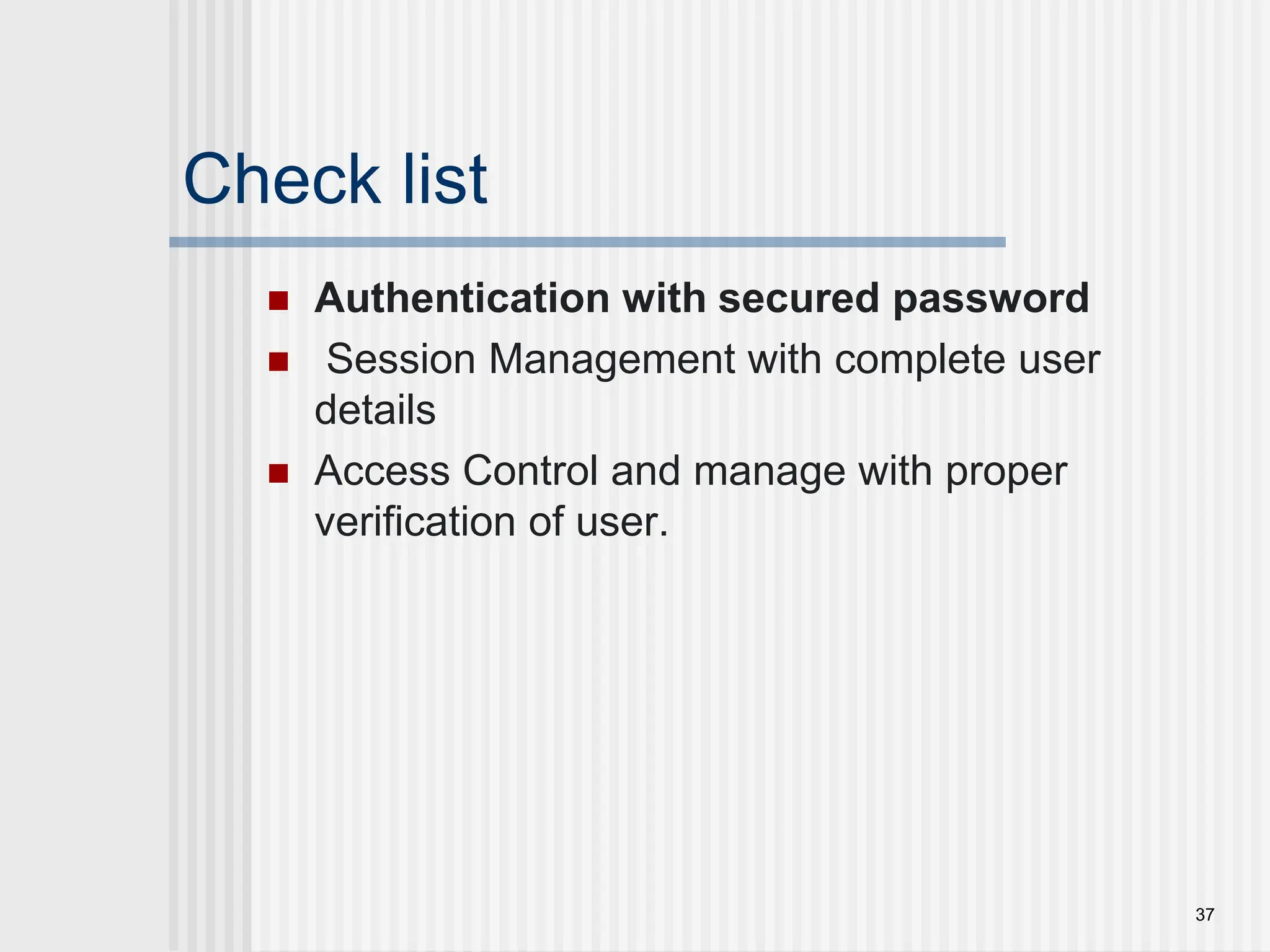Software Configuration Management (SCM) encompasses a set of activities aimed at controlling changes throughout the software life cycle, ensuring the integrity and traceability of configurations. Key processes include version control, change control, and auditing to manage the various components and documents involved in software development. Effective SCM maximizes productivity by minimizing disruptions caused by changes and enabling systematic management of evolving software requirements.
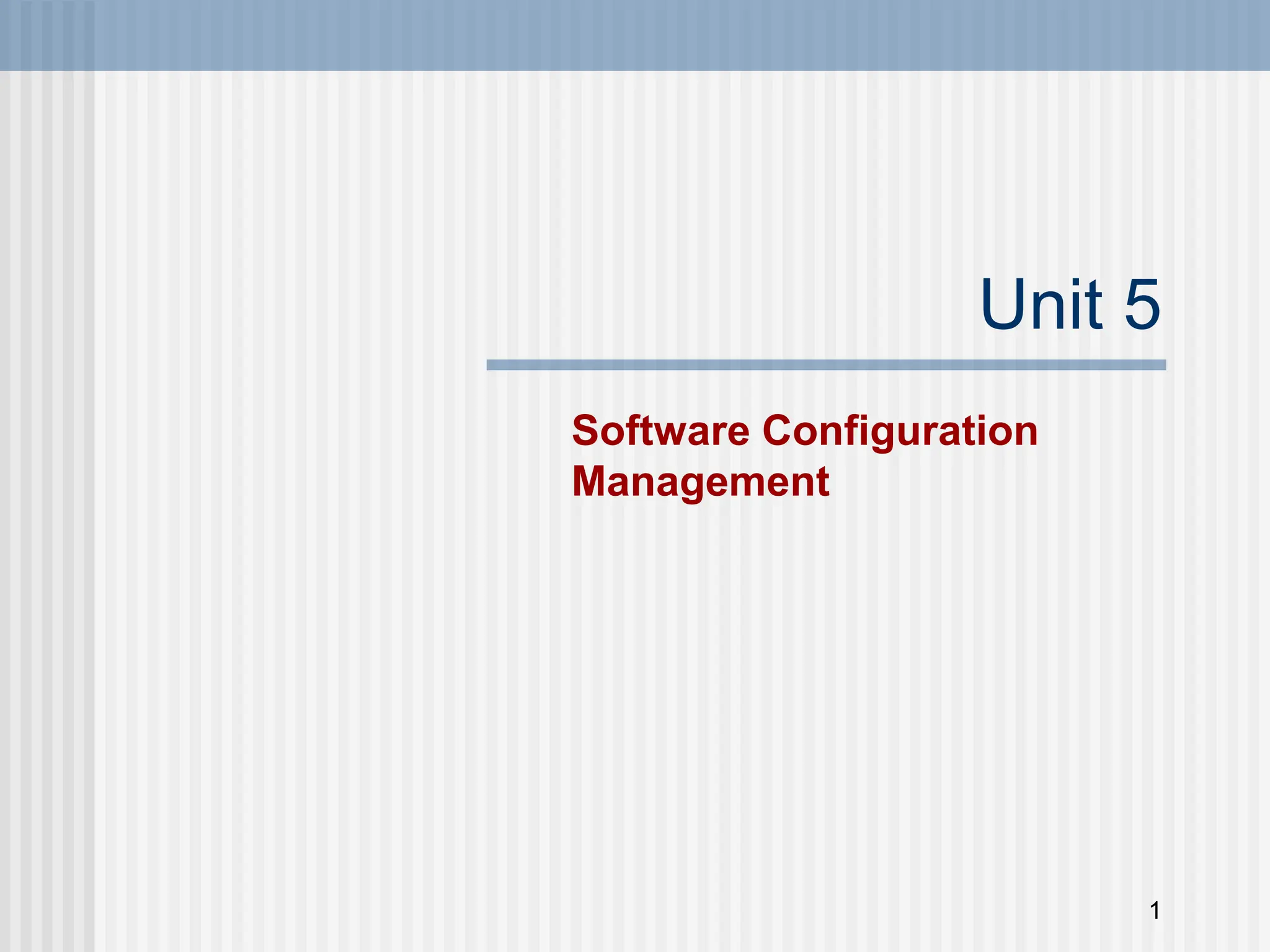
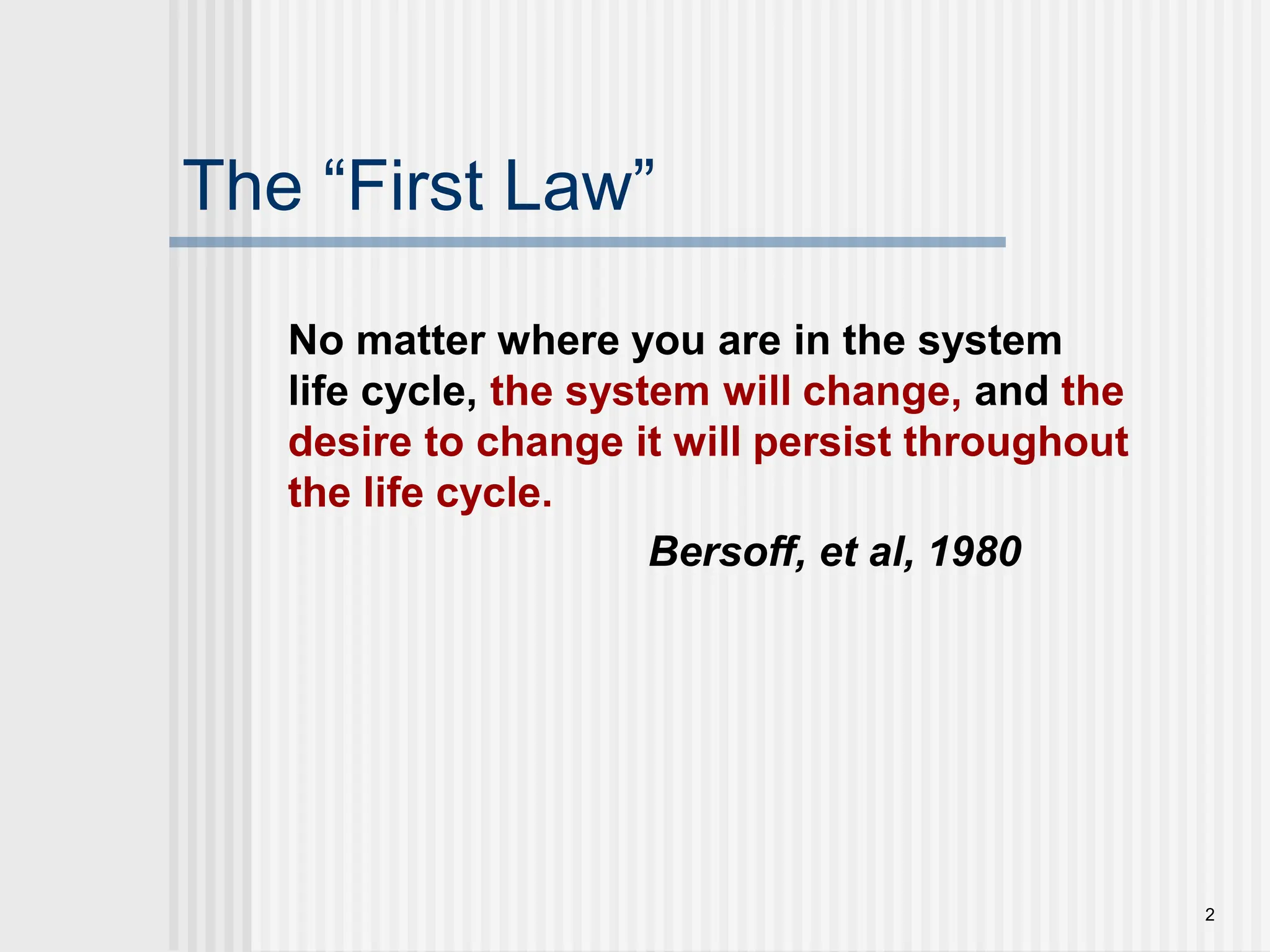
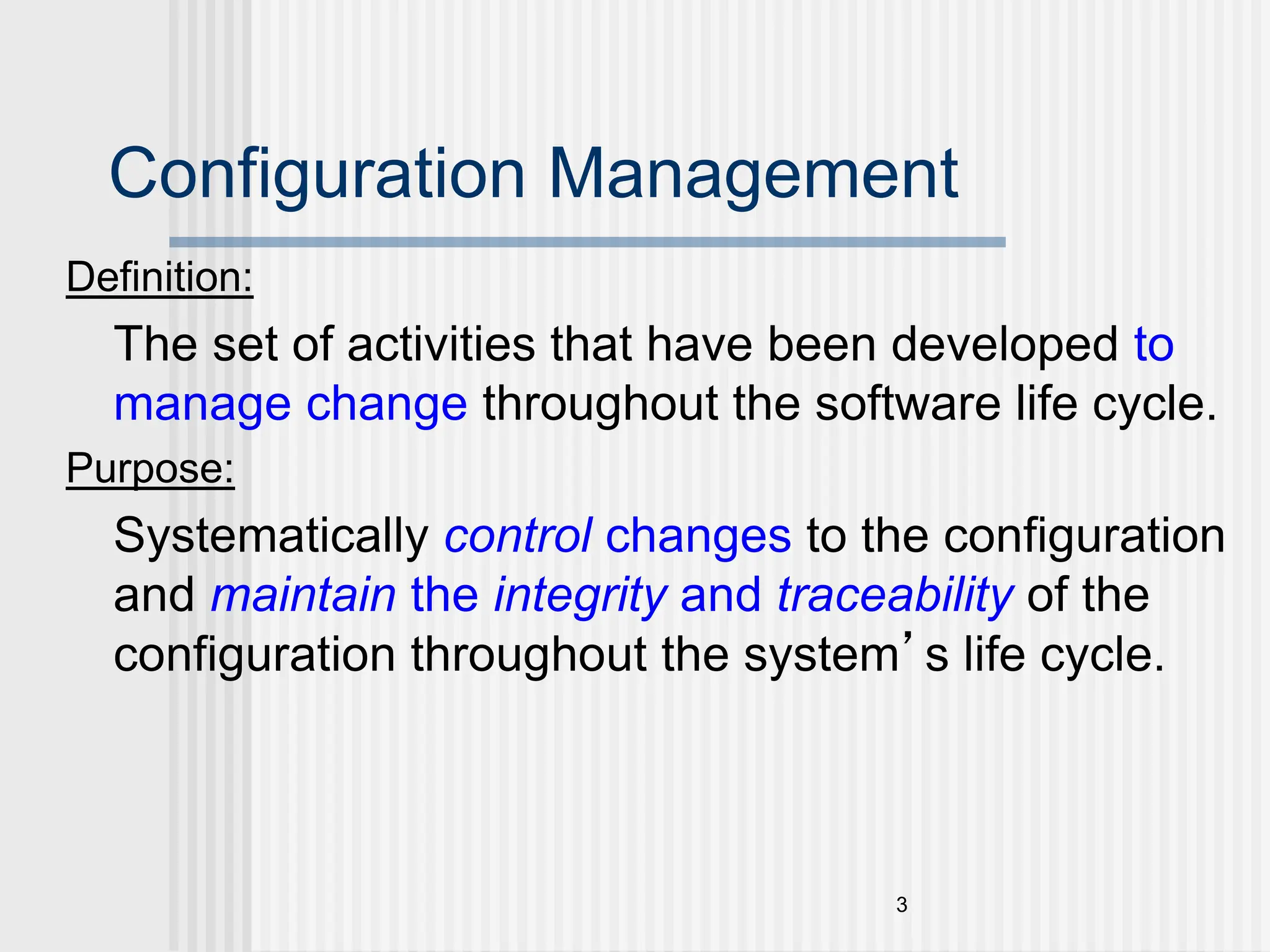

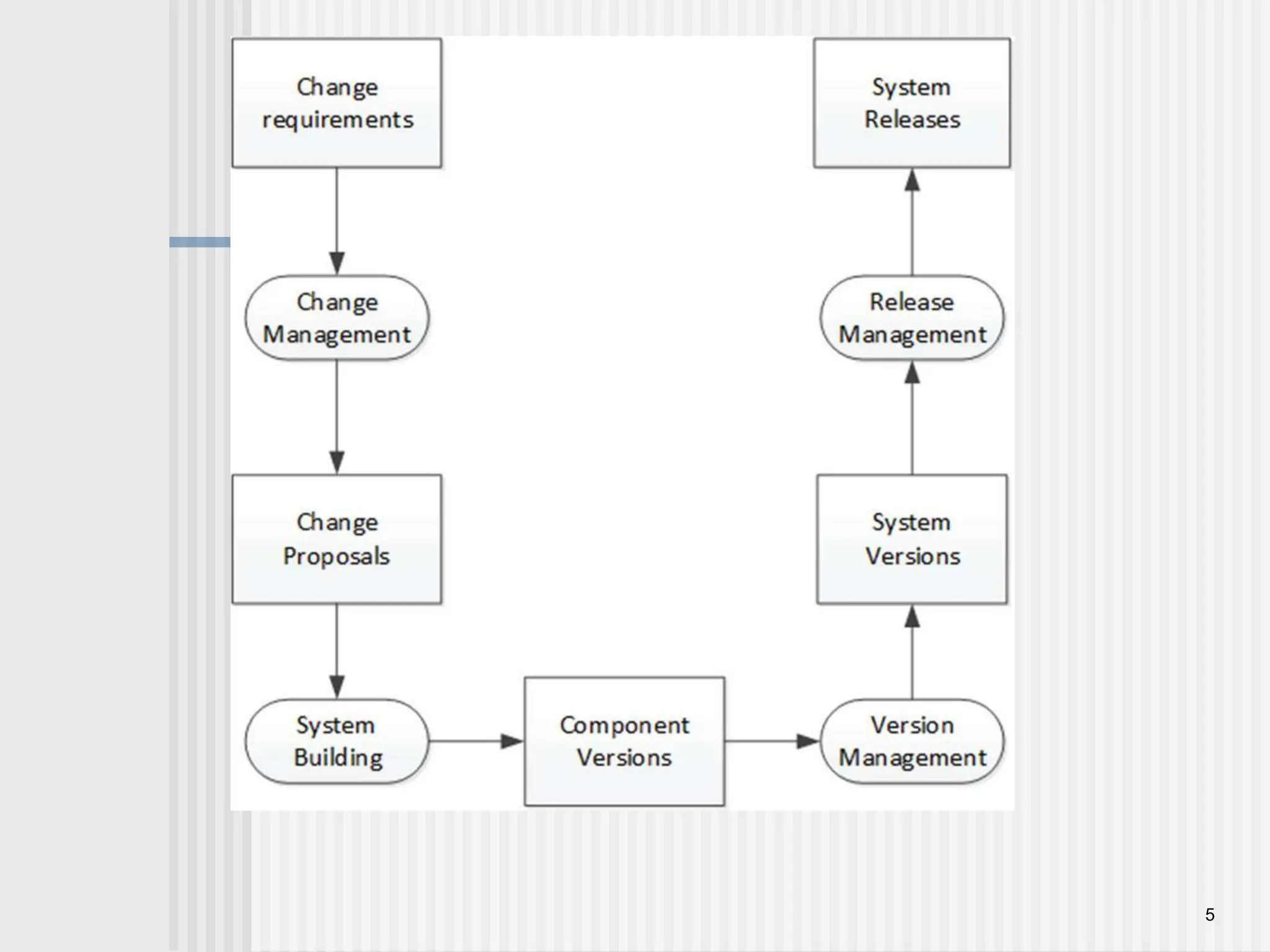

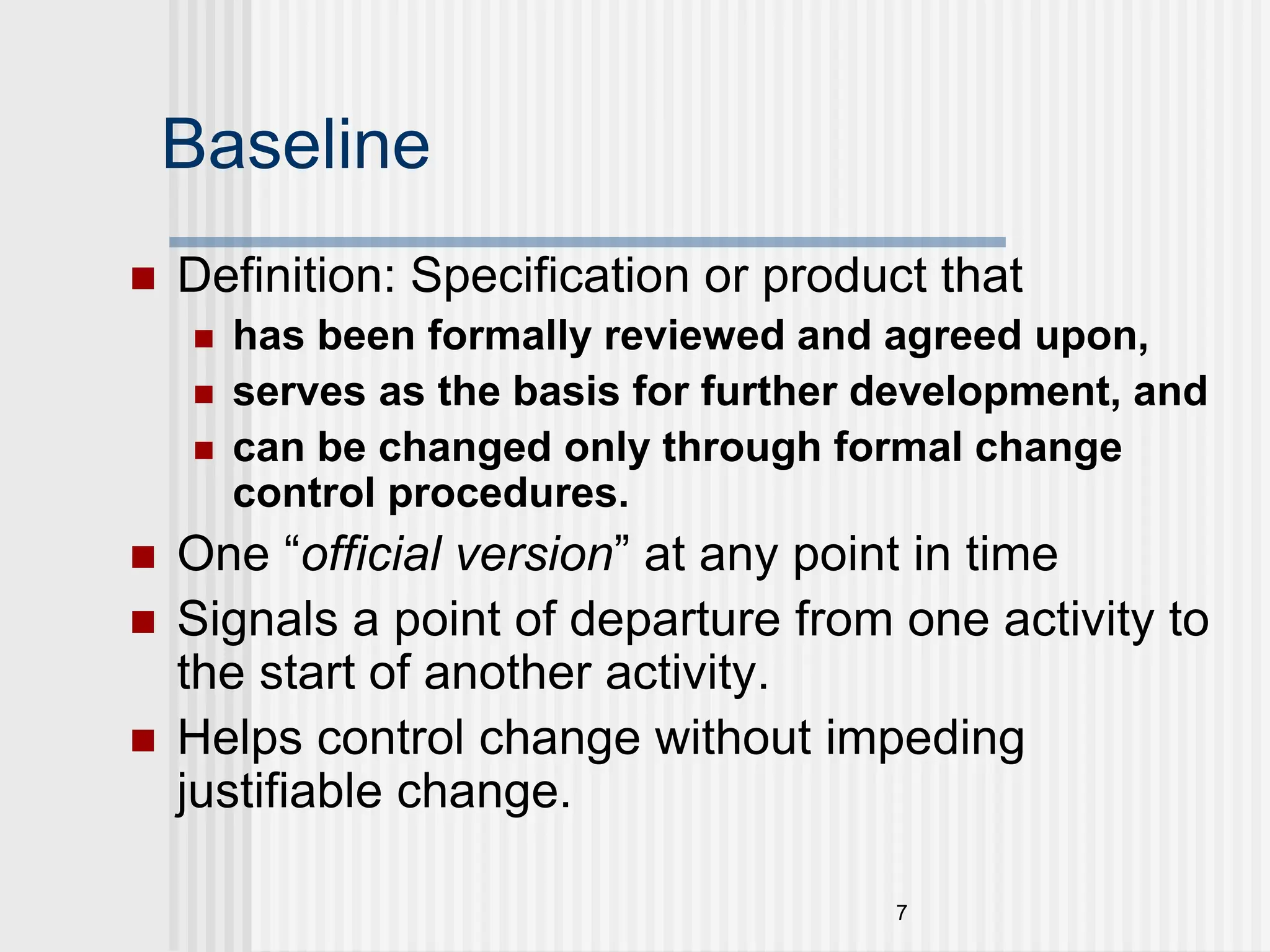
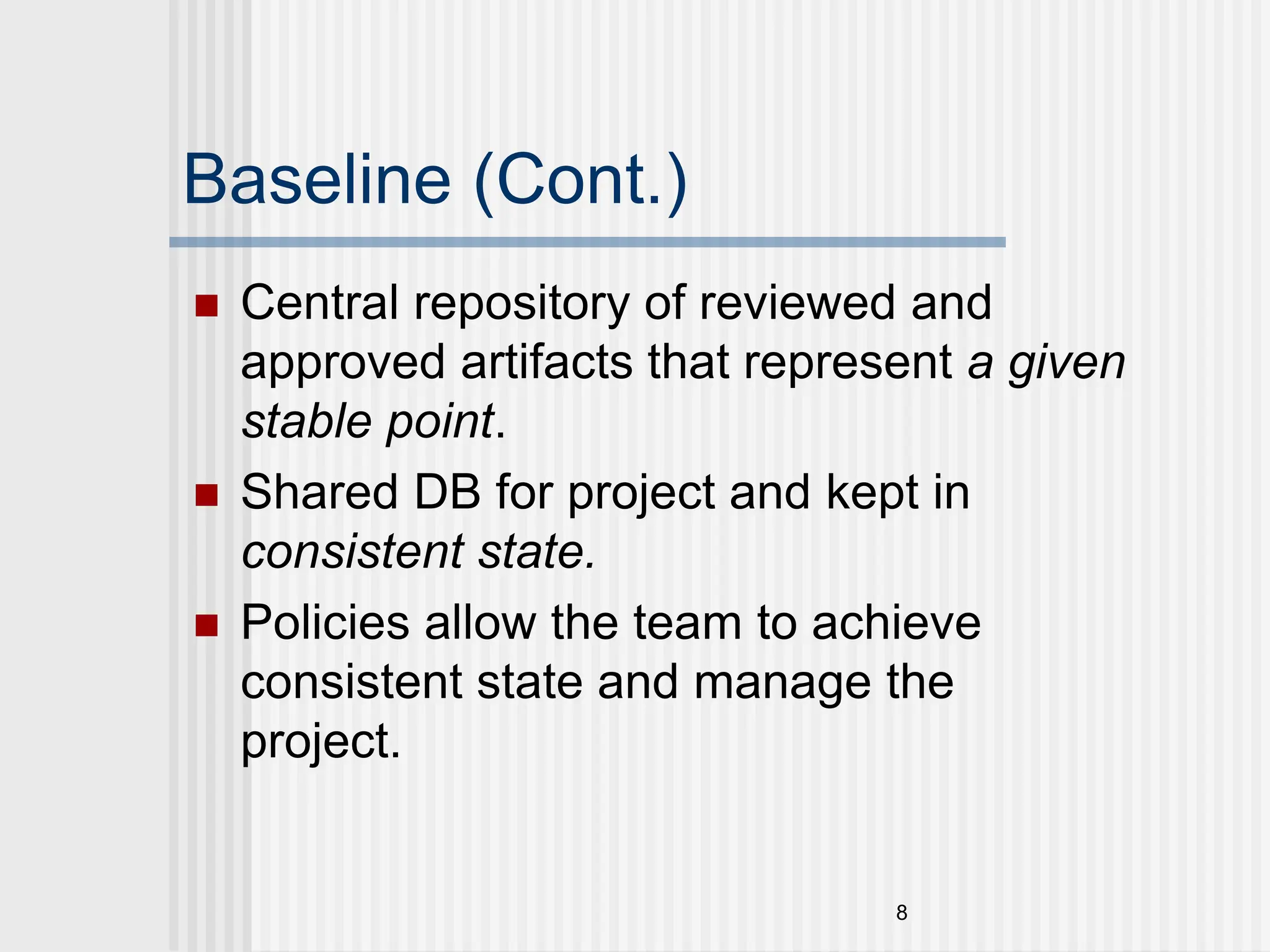
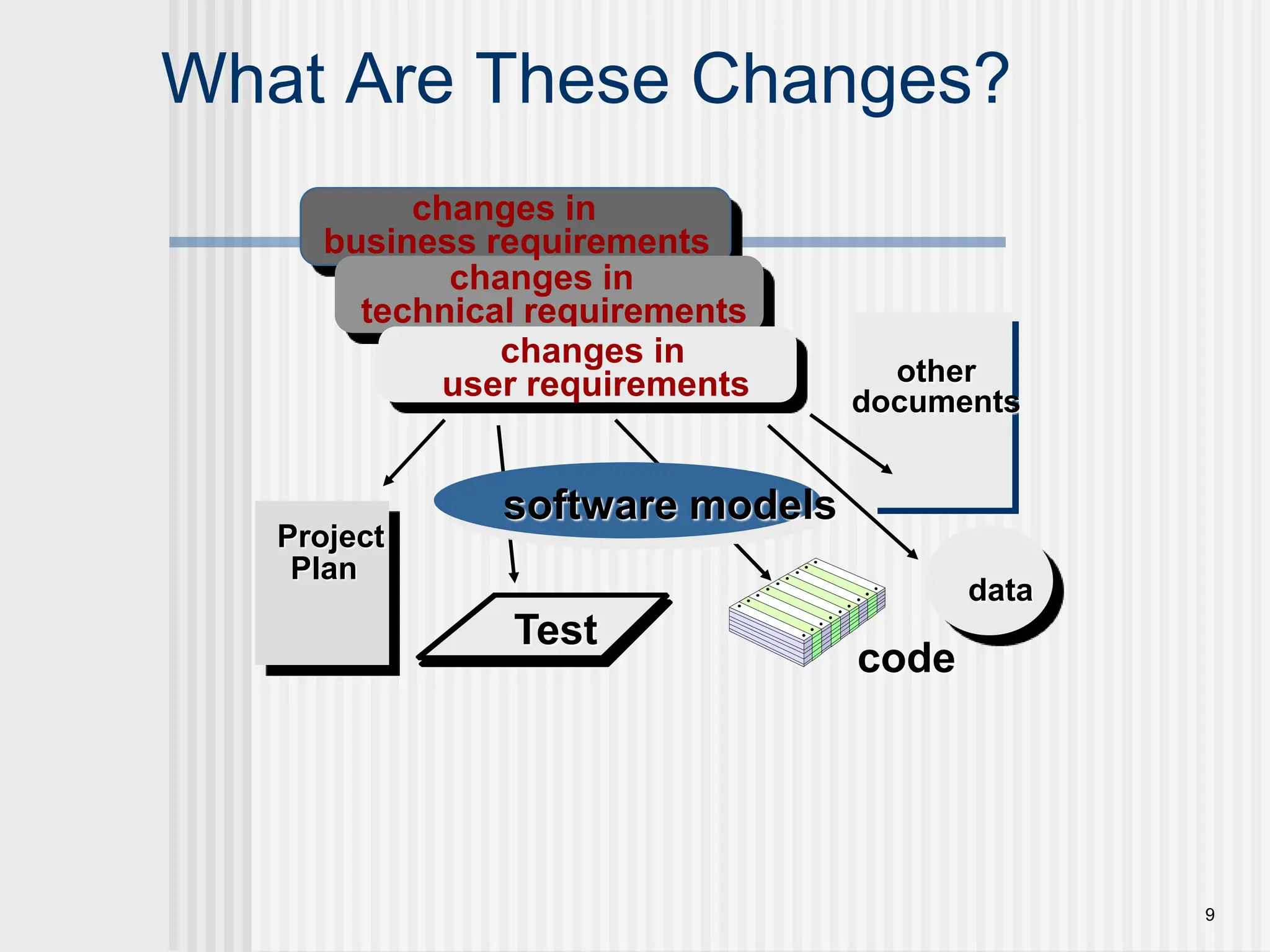
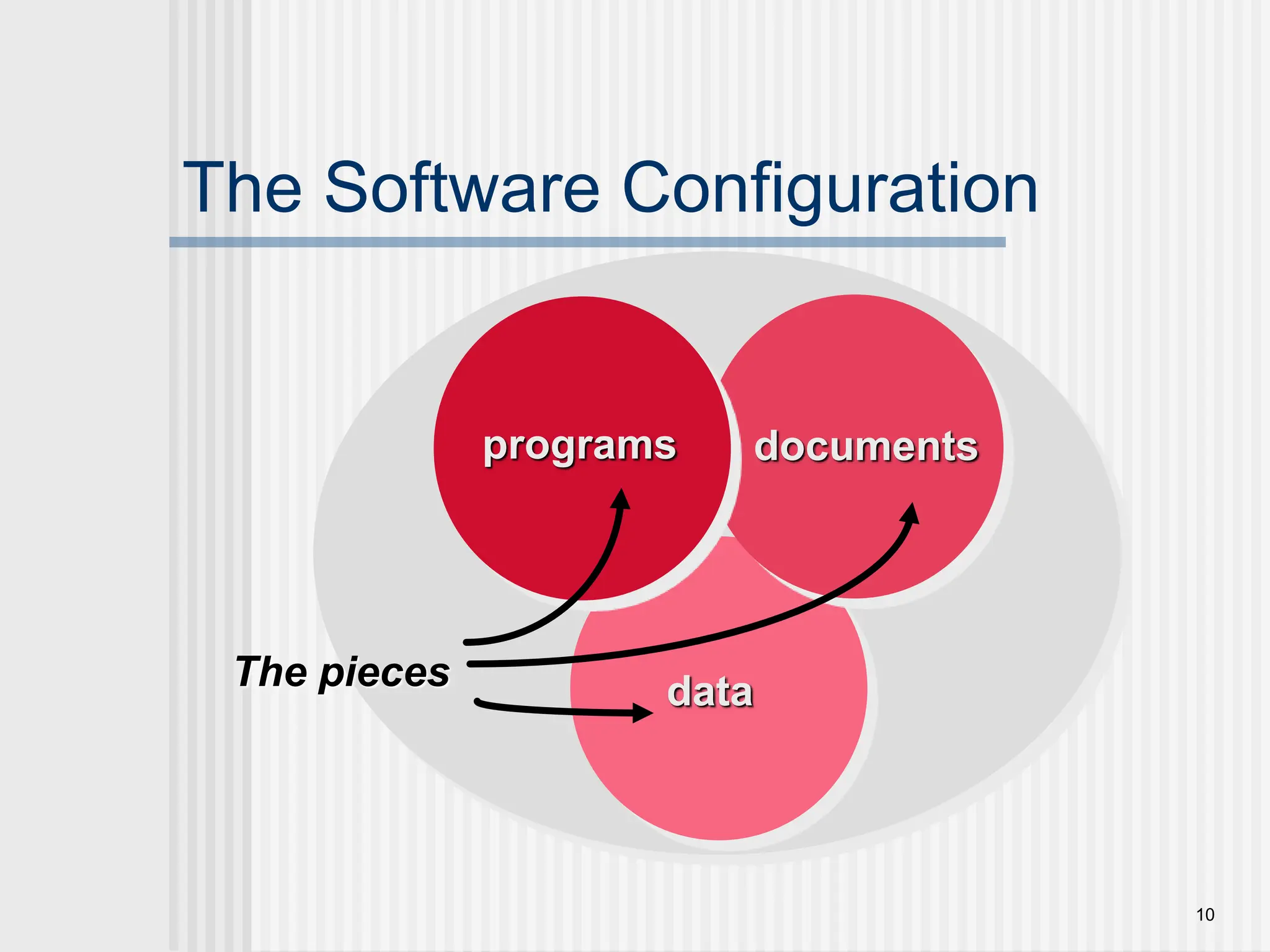
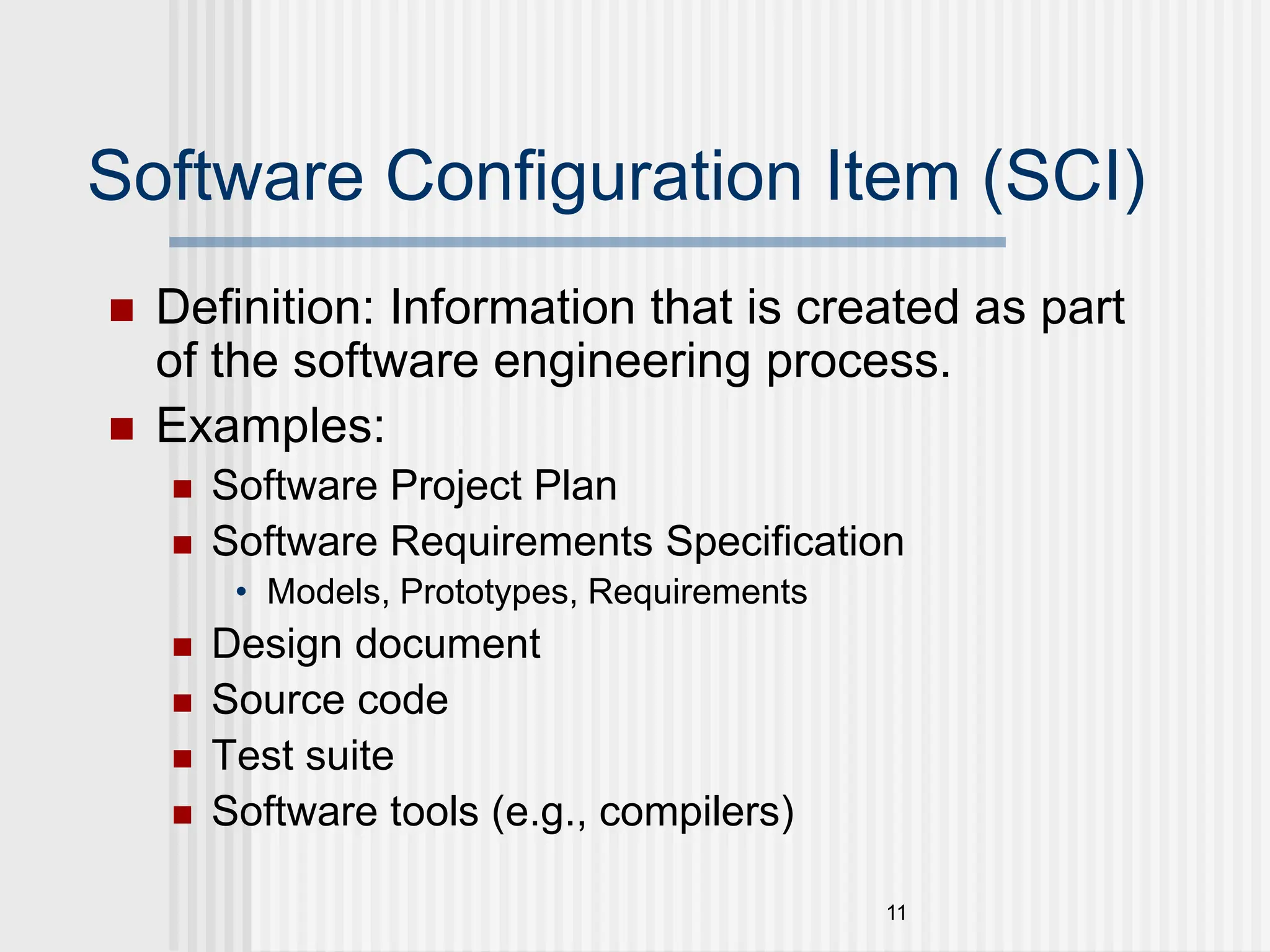

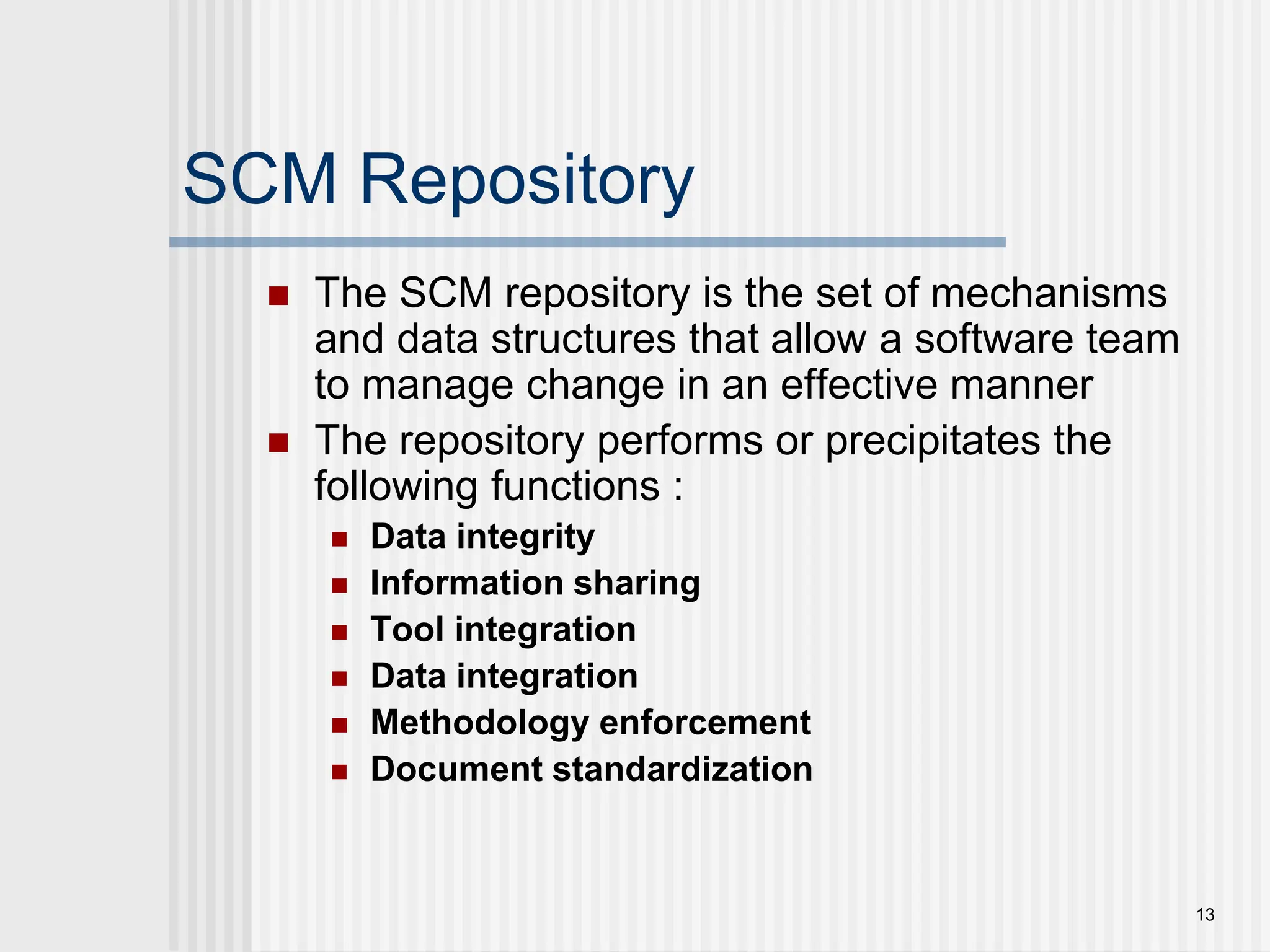



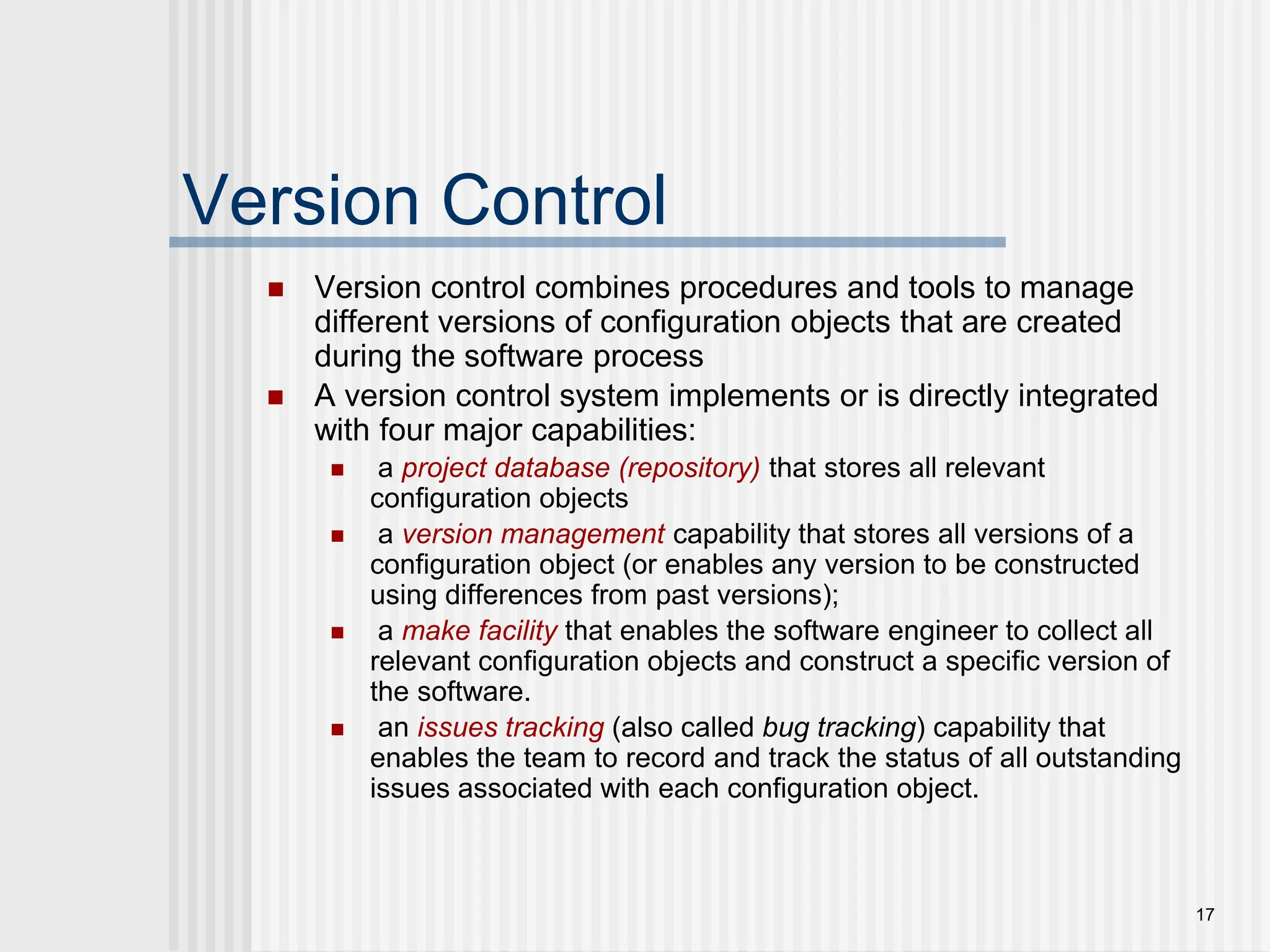

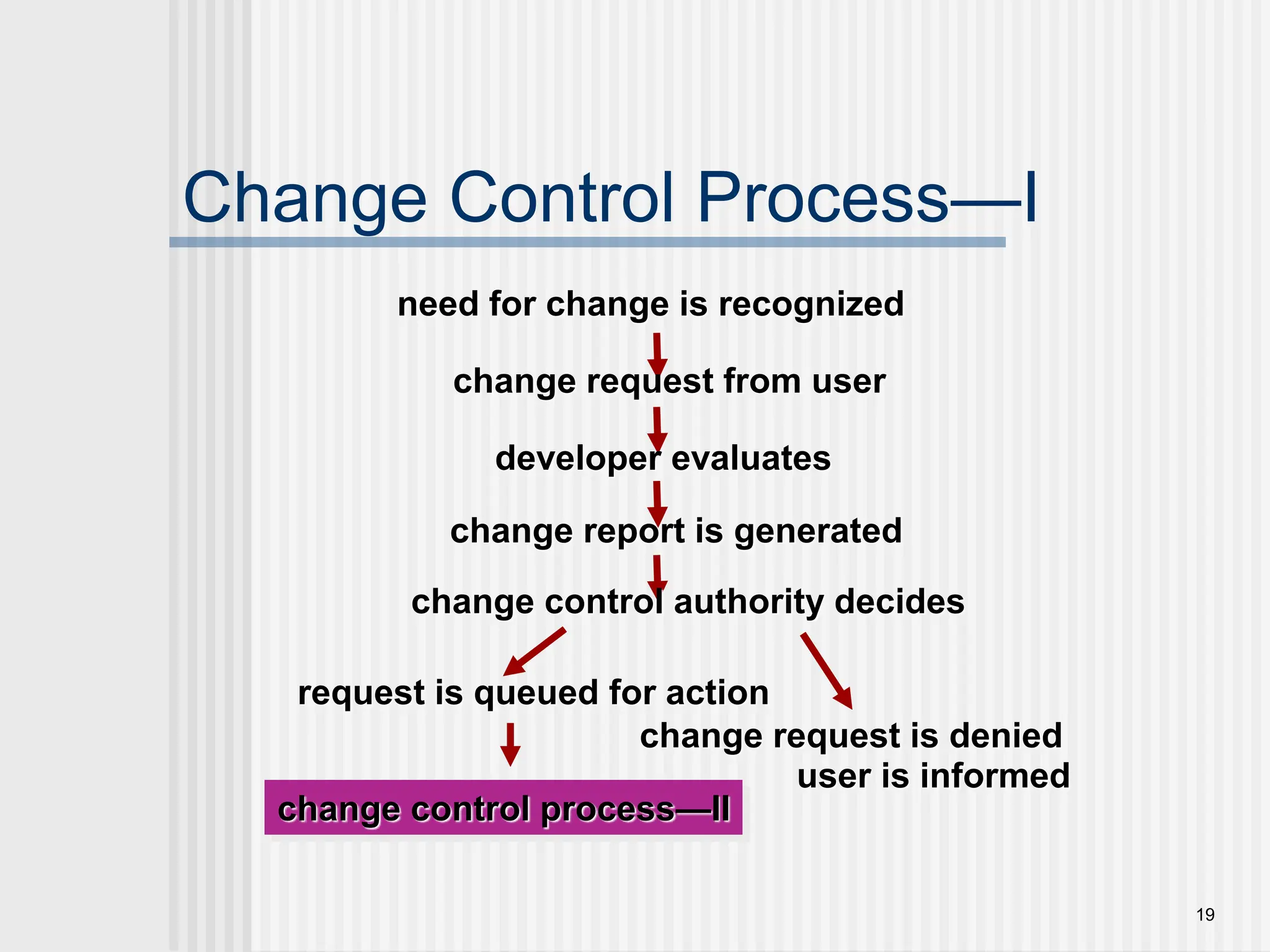

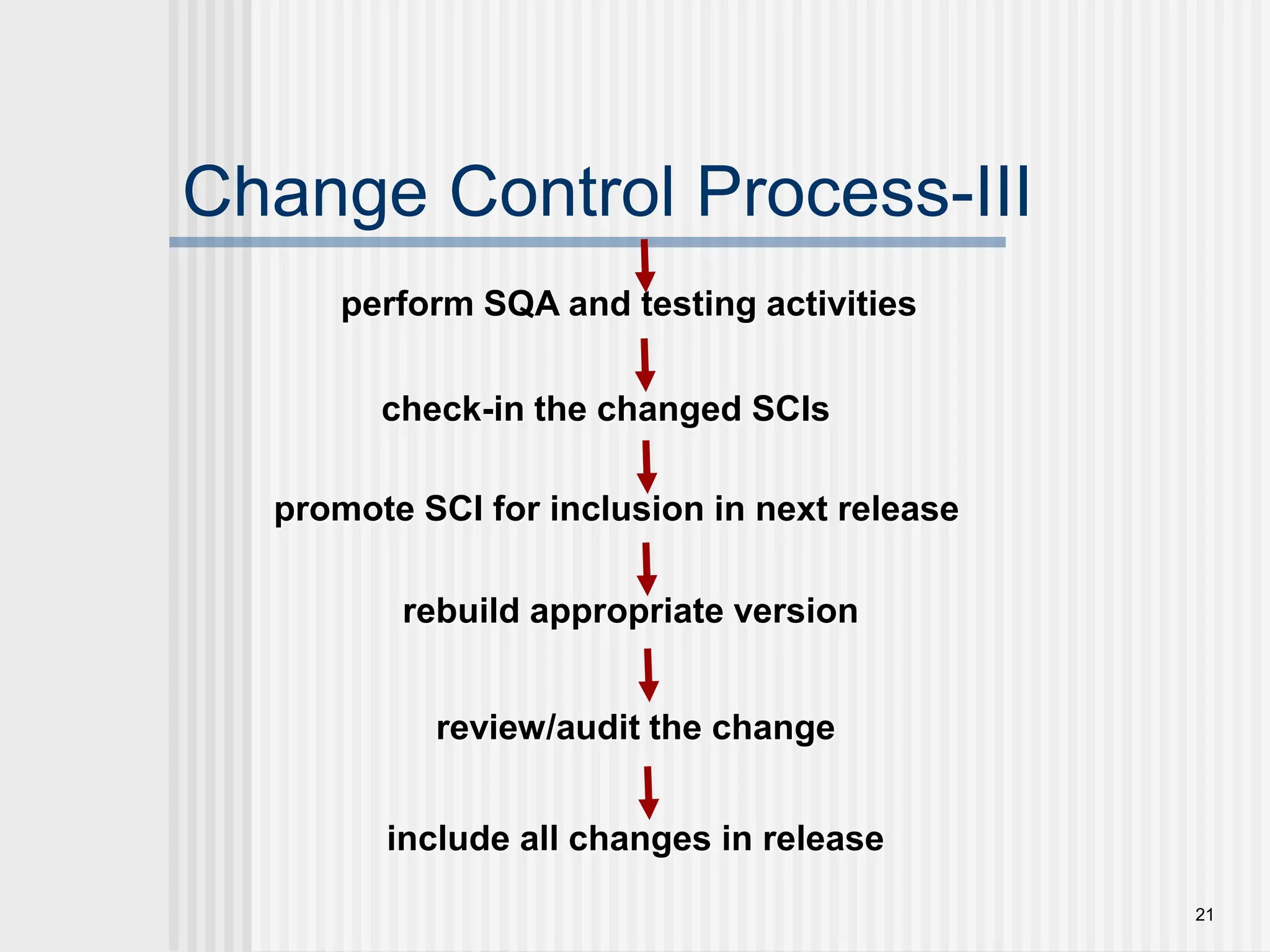
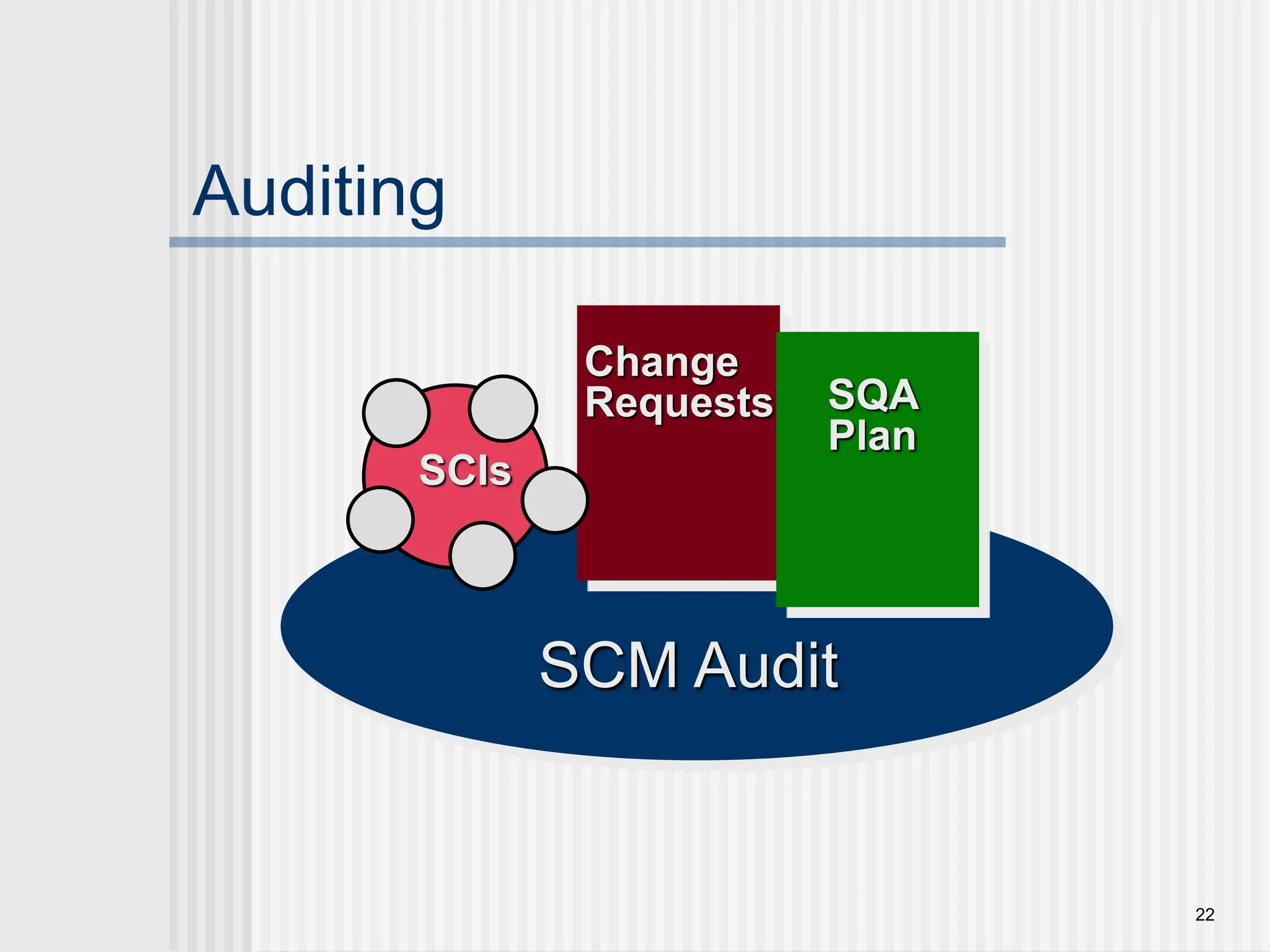
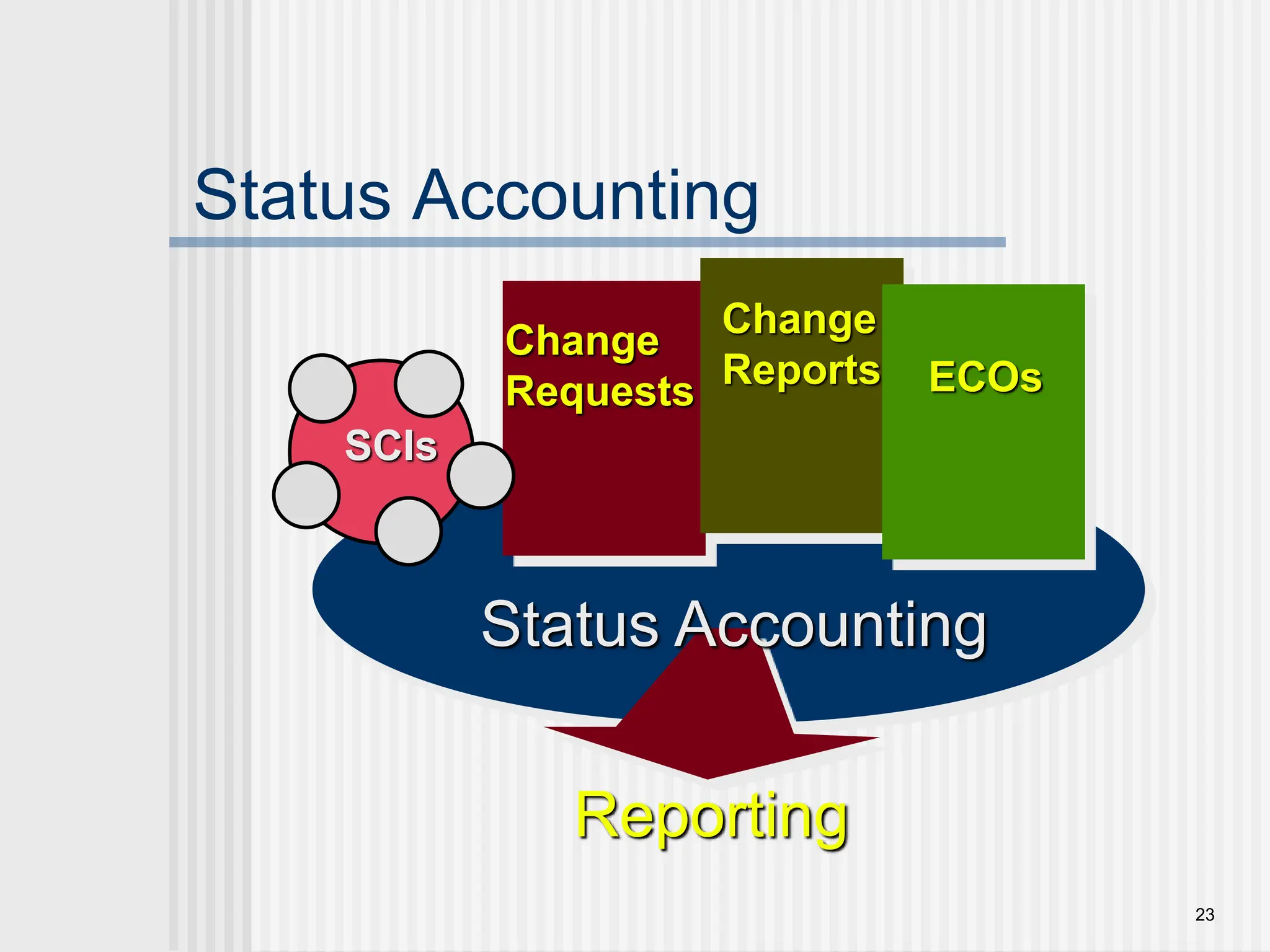
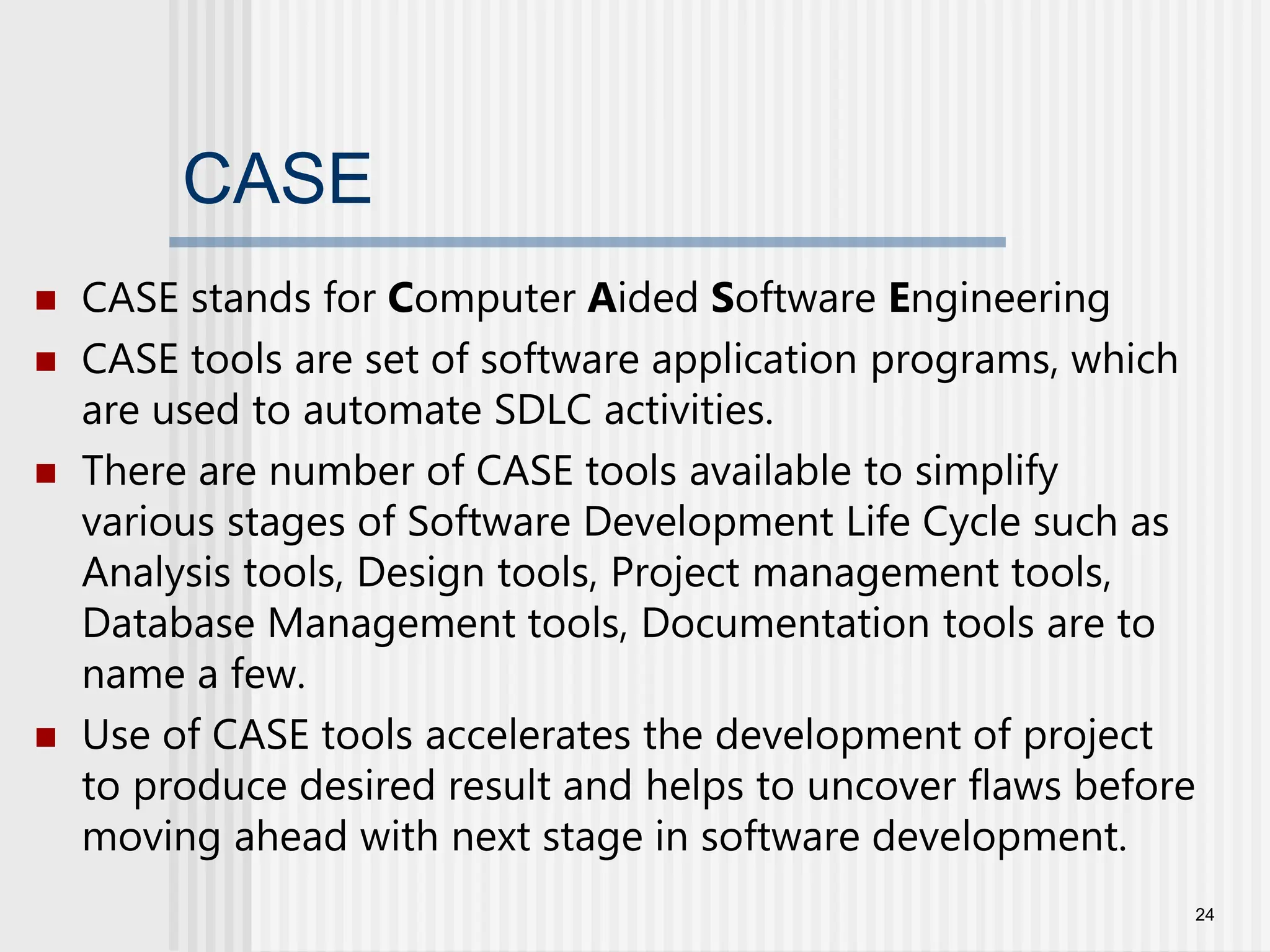

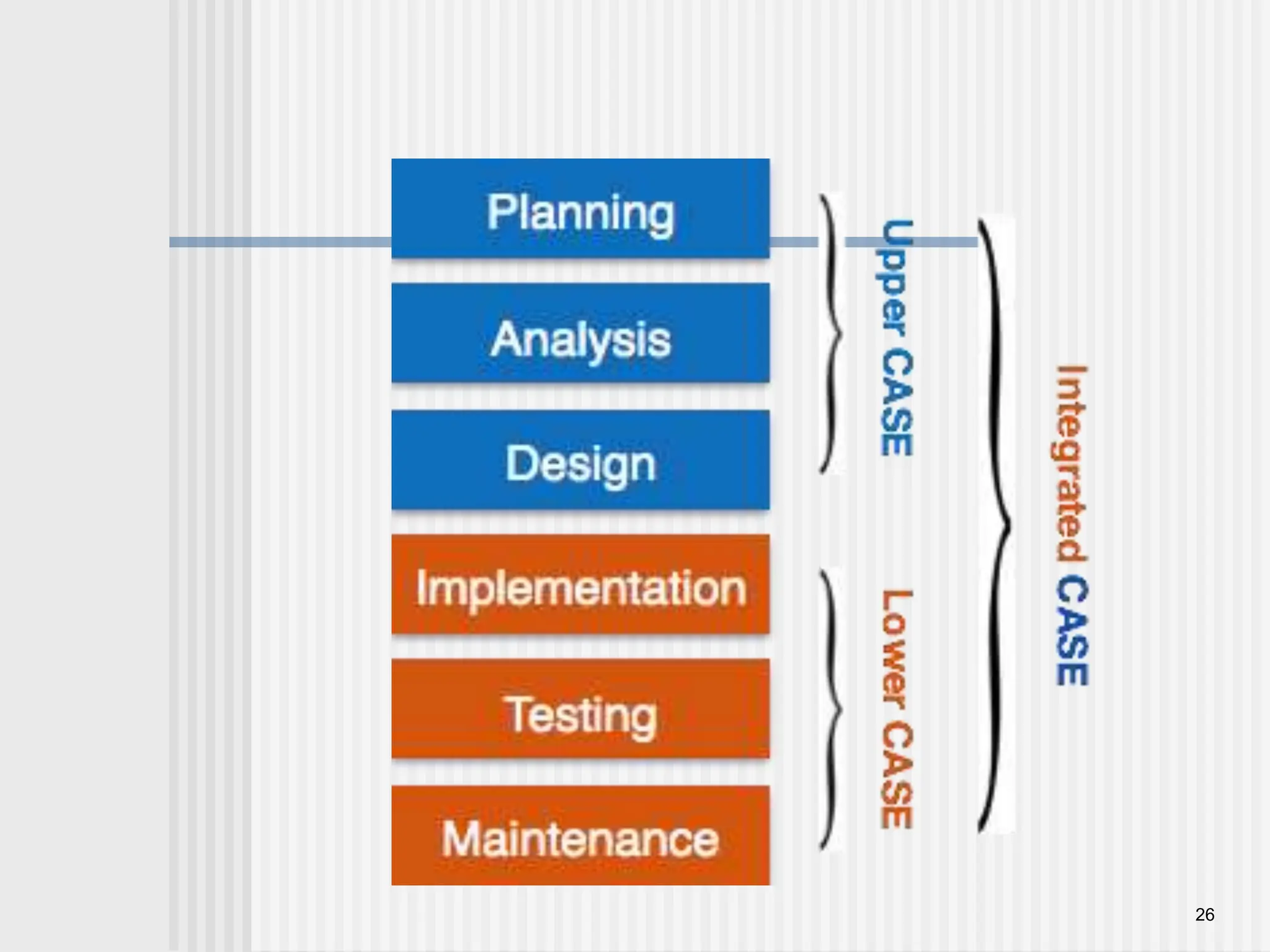
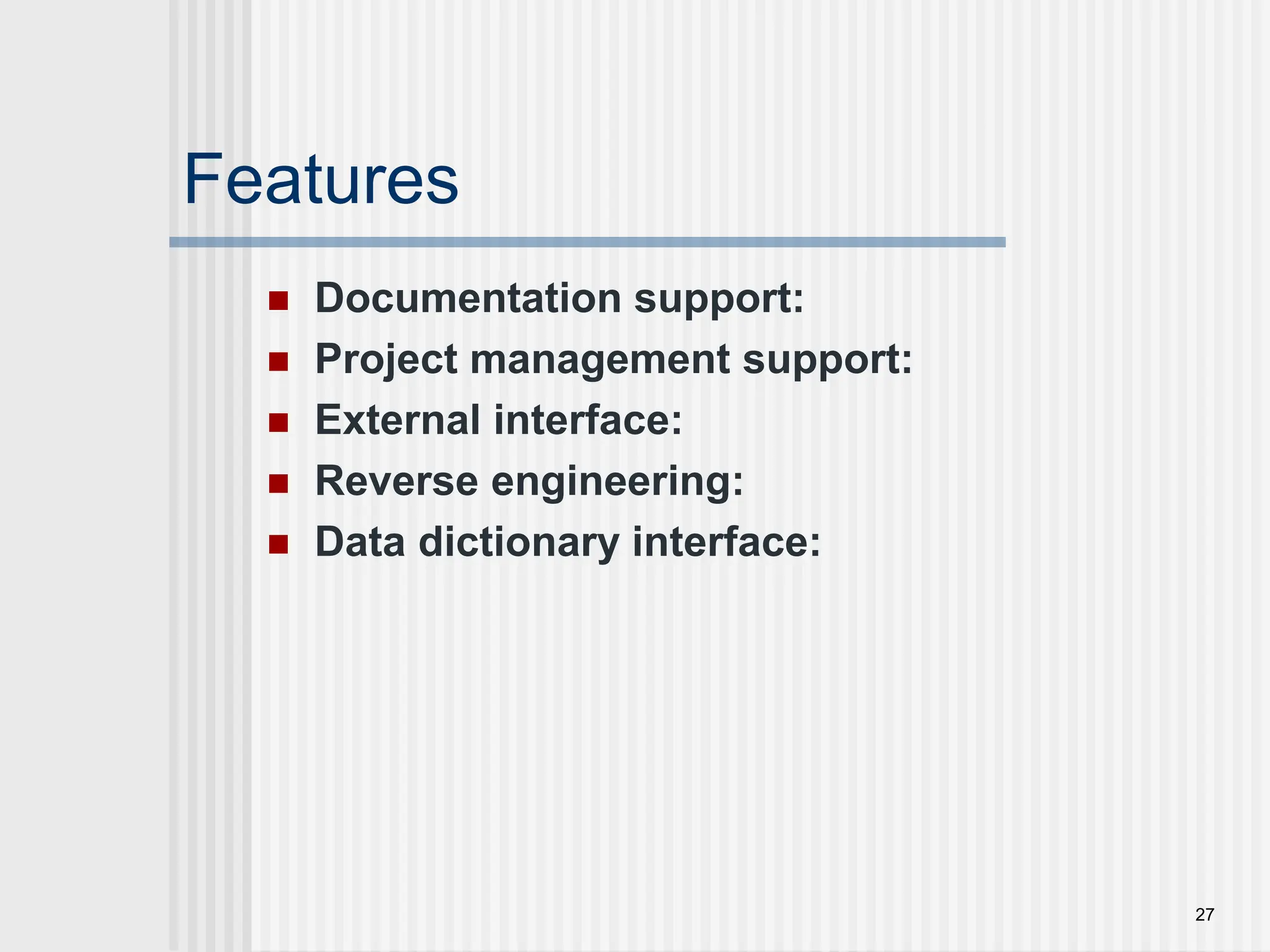
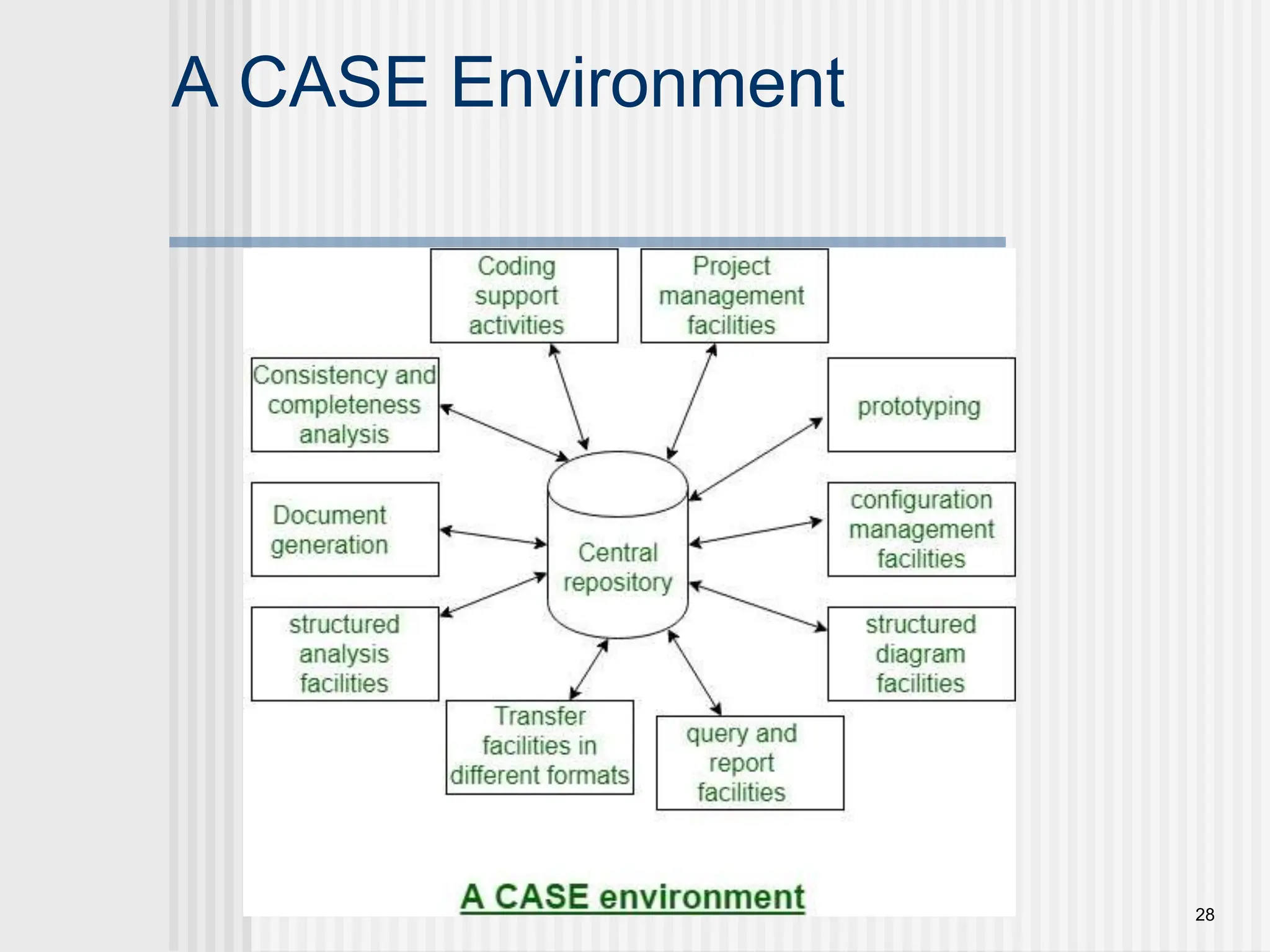
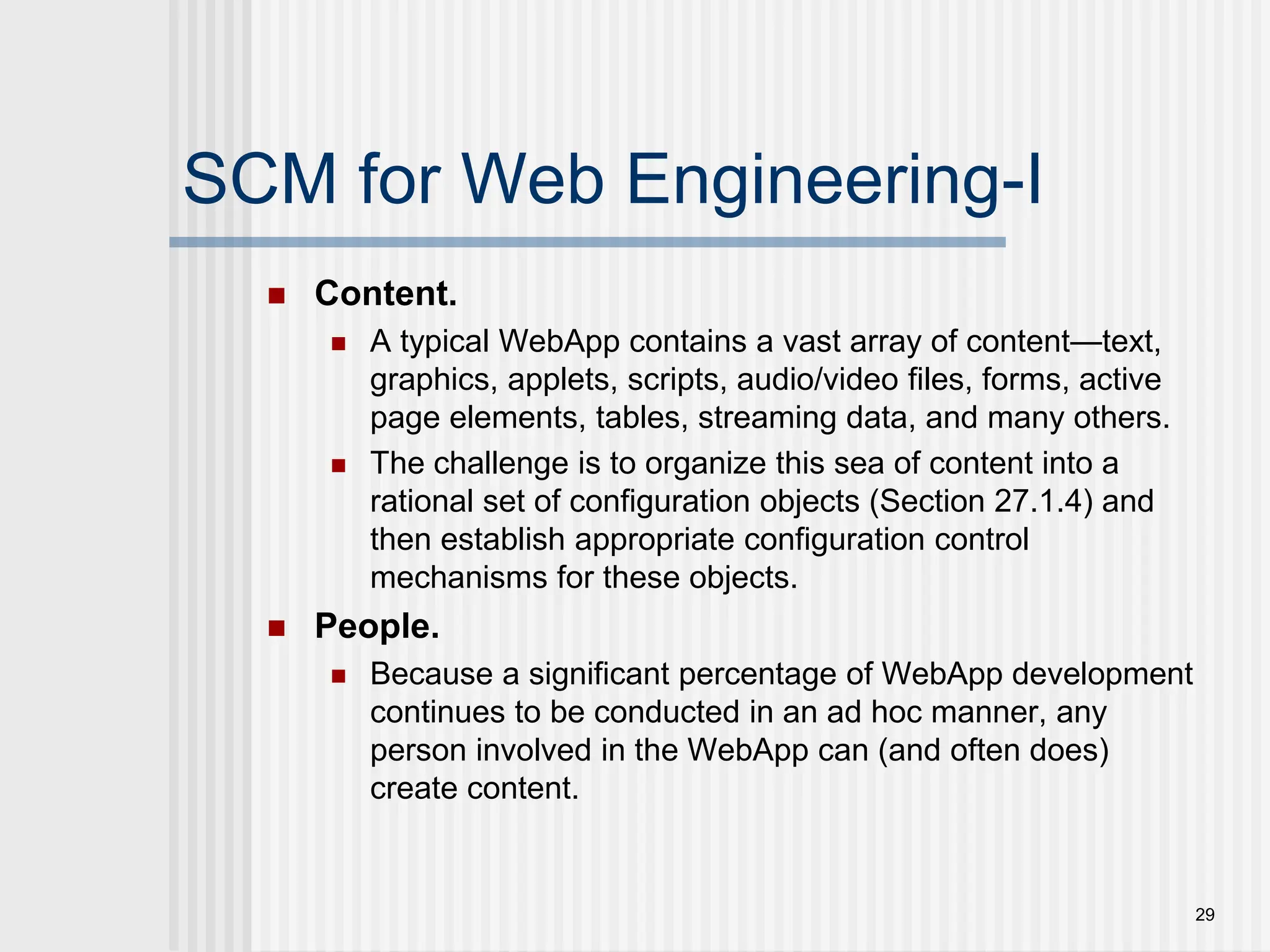

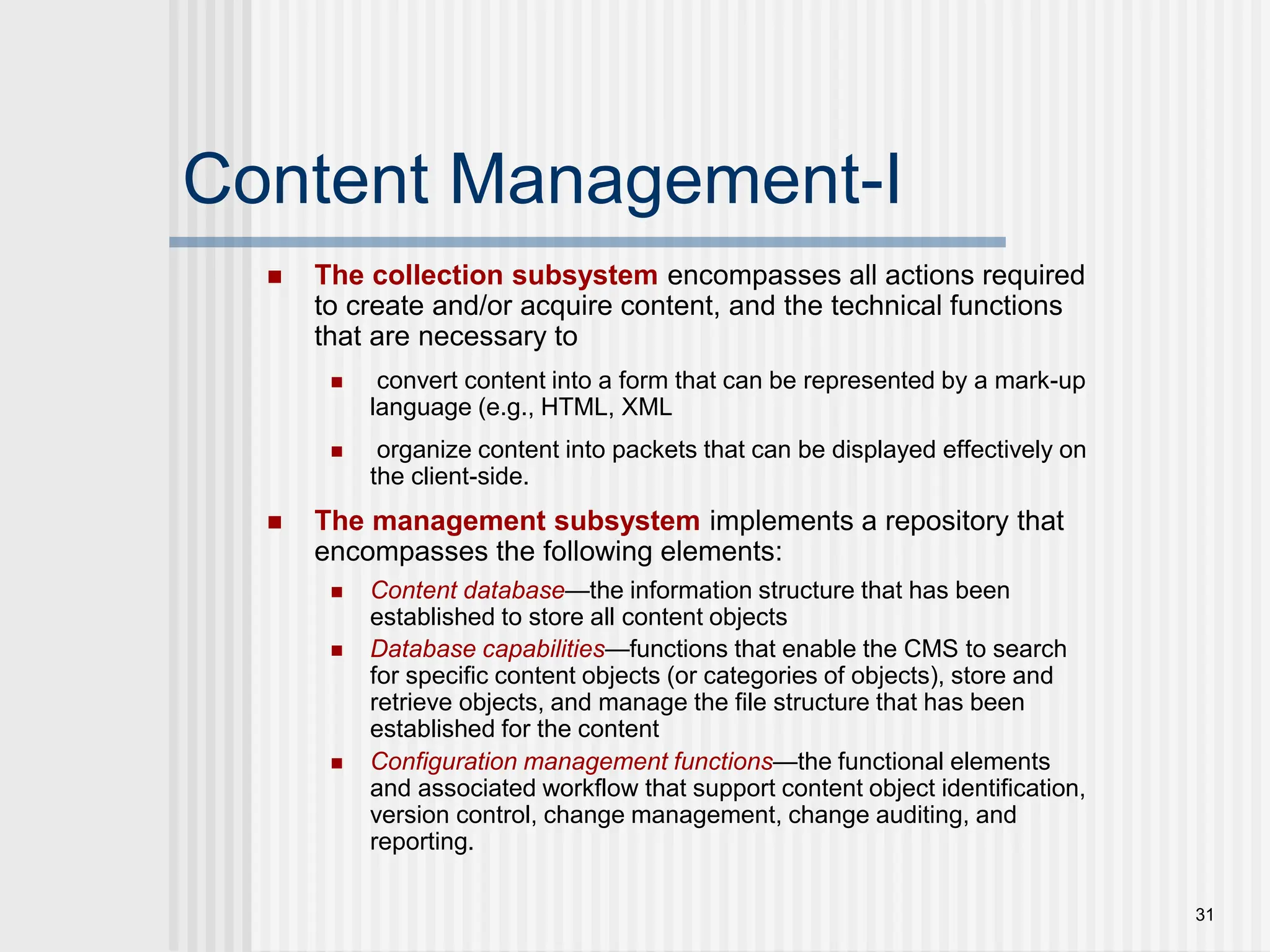
![32 Content Management-II The publishing subsystem extracts from the repository, converts it to a form that is amenable to publication, and formats it so that it can be transmitted to client-side browsers. The publishing subsystem accomplishes these tasks using a series of templates. Each template is a function that builds a publication using one of three different components [BOI02]: Static elements—text, graphics, media, and scripts that require no further processing are transmitted directly to the client-side Publication services—function calls to specific retrieval and formatting services that personalize content (using predefined rules), perform data conversion, and build appropriate navigation links. External services—provide access to external corporate information infrastructure such as enterprise data or “back- room” applications.](https://image.slidesharecdn.com/mod5-scm-240428144040-f7934890/75/Software-configuration-management-Web-engineering-32-2048.jpg)

